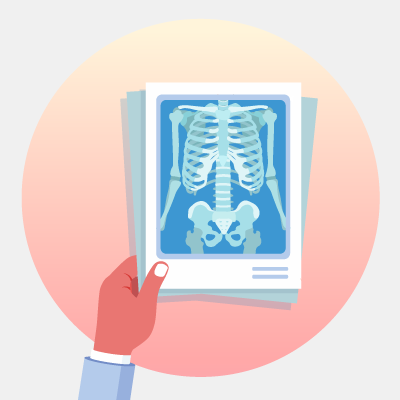Diagnosis of
Ankylosing Spondylitis (AS)
Diagnosis of Ankylosing Spondylitis (AS) is made on the basis of the following criteria:<sup>1</sup>
Low back pain of at least 3 months duration with inflammatory characteristics (morning stiffness, improved by exercise, not relieved by rest)
Limitation of lower (lumbar) back movement
Inflammation of the sacroiliac joint on one side or both sides
Decreased chest expansion
Physical exam and AS activity

Marked tenderness and spasm mark AS activity.
A physical examination cannot quantify AS activity because there is a lack of standardized measures of spinal tenderness or spasm. There is no way to grade their severity.<sup>2</sup>
Patient-reported symptom severity, limitations in functioning due to pain, stiffness, muscle spasm, or joint swelling, and signs on physical examination indicate AS activity.<sup>2</sup>
Imaging

A number of imaging abnormalities, especially those affecting the spine and sacroiliac joints, are characteristic of AS.<sup>3</sup>
X-rays can point out signs in the pelvis and spine. Most of the early signs will be seen around the sacroiliac joint (SI joint). In advanced cases of AS, calcium deposits in the ligaments and discs can be seen.
References –
- McVeigh CM, et al. Diagnosis and management of ankylosing spondylitis. BMJ. 2006;333(7568):581–585.
- Ward MM. Outcomes in ankylosing spondylitis: what makes the assessment of treatment effects in ankylosing spondylitis different?. Ann Rheum Dis. 2006;65 Suppl 3(Suppl 3):iii25–iii28.
- Wenker KJ, Quint JM. Ankylosing Spondylitis. [Updated 2018 Nov 14]. In: StatPearls [Internet]. Treasure Island (FL): StatPearls Publishing; 2019 Jan-. Available from: https://www.ncbi.nlm.nih.gov/books/NBK470173/.



